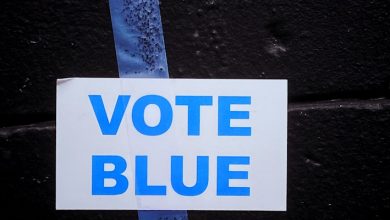Blockchain and Its Potential in the Education Sector

- Understanding Blockchain Technology
- Challenges in the Education Sector
- Benefits of Implementing Blockchain in Education
- Use Cases of Blockchain in Educational Institutions
- Enhancing Security and Transparency in Education
- Future Trends of Blockchain in the Education Sector
Understanding Blockchain Technology
Blockchain technology is a decentralized, distributed ledger system that allows for secure and transparent transactions without the need for intermediaries. This technology is based on a chain of blocks containing data that is cryptographically linked and stored across a network of computers. Each block contains a unique hash, timestamp, and transaction data, making it virtually impossible to alter or tamper with the information stored within the blockchain.
One of the key features of blockchain technology is its ability to provide a high level of security and transparency. Because each block is linked to the previous one, any attempt to alter the data in a block would require changing all subsequent blocks in the chain, which is extremely difficult to do. This makes blockchain technology ideal for applications where data integrity and security are paramount, such as in the education sector.
In the education sector, blockchain technology has the potential to revolutionize the way academic credentials are verified and stored. By using blockchain technology, educational institutions can create a secure and tamper-proof system for issuing and verifying degrees, certificates, and other credentials. This can help prevent fraud and ensure that academic achievements are accurately represented.
Furthermore, blockchain technology can also streamline administrative processes in education by providing a secure and transparent way to store and share student records, course materials, and other important information. This can help reduce paperwork, improve data accuracy, and enhance collaboration among students, educators, and administrators.
Overall, blockchain technology has the potential to transform the education sector by providing a secure, transparent, and efficient way to store and verify academic credentials and other important information. By leveraging the power of blockchain technology, educational institutions can improve data security, streamline administrative processes, and enhance the overall learning experience for students.
Challenges in the Education Sector
There are several challenges that the education sector faces when it comes to implementing blockchain technology. One of the main issues is the lack of awareness and understanding among educators and administrators about how blockchain can be utilized in the field of education. This results in a reluctance to adopt new technologies and a resistance to change.
Another challenge is the cost associated with implementing blockchain systems in educational institutions. The initial investment required to set up the infrastructure and train staff can be prohibitive for many schools and universities. Additionally, there may be ongoing maintenance costs that need to be considered.
Furthermore, there are concerns about data privacy and security when it comes to using blockchain in education. As blockchain technology relies on a decentralized network of computers to store information, there is a risk of data breaches and hacking. This is a significant concern for educational institutions that handle sensitive student information.
Additionally, there is a lack of standardization and interoperability in the blockchain space, which can make it difficult for different systems to communicate with each other. This can create challenges when trying to implement blockchain solutions across multiple educational institutions or platforms.
Overall, while blockchain technology has the potential to revolutionize the education sector by providing secure and transparent systems for storing and sharing information, there are still several hurdles that need to be overcome in order to fully realize these benefits.
Benefits of Implementing Blockchain in Education
Implementing blockchain technology in the education sector offers a wide range of benefits that can revolutionize the way educational institutions operate and students learn. Some of the key advantages of integrating blockchain in education include:
- **Enhanced Security:** Blockchain technology provides a secure and tamper-proof way of storing and sharing data, ensuring that student records, certificates, and other important documents are protected from unauthorized access or alteration.
- **Transparency and Trust:** By using blockchain, educational institutions can create a transparent system where all transactions and data exchanges are recorded on a decentralized ledger, fostering trust among students, teachers, and other stakeholders.
- **Streamlined Processes:** Blockchain can streamline administrative processes such as enrollment, credential verification, and academic record management, reducing paperwork, minimizing errors, and saving time and resources.
- **Credential Verification:** With blockchain, students can have their academic credentials securely stored and easily verified by potential employers, eliminating the need for third-party verification services and reducing the risk of credential fraud.
- **Cost Savings:** By automating manual processes, reducing administrative overhead, and eliminating intermediaries, blockchain can help educational institutions cut costs and allocate resources more efficiently.
Overall, the implementation of blockchain technology in education has the potential to transform the sector by improving security, transparency, efficiency, and trust among all stakeholders. As more institutions adopt blockchain solutions, the education sector is poised to enter a new era of innovation and collaboration.
Use Cases of Blockchain in Educational Institutions
Blockchain technology has the potential to revolutionize the education sector by providing increased security, transparency, and efficiency in various processes. Here are some of the key use cases of blockchain in educational institutions:
- Secure Credentialing: Blockchain can be used to securely store and verify academic credentials, such as degrees, certificates, and diplomas. This can help prevent fraud and ensure that credentials are tamper-proof.
- Transparent Record Keeping: By using blockchain for record-keeping, educational institutions can create a transparent and immutable ledger of student records, including grades, attendance, and achievements.
- Smart Contracts: Smart contracts can automate various processes in education, such as student enrollment, course registration, and fee payments. This can streamline administrative tasks and reduce the risk of errors.
- Decentralized Learning Platforms: Blockchain can support the development of decentralized learning platforms, where students can access educational resources, collaborate with peers, and earn credentials through a transparent and secure system.
- Micro-Credentialing: With blockchain, educational institutions can issue micro-credentials for specific skills or achievements, which can be stored on the blockchain and easily shared with employers or other institutions.
Overall, blockchain has the potential to transform the education sector by improving security, transparency, and efficiency in various processes. By leveraging blockchain technology, educational institutions can enhance trust, reduce administrative burdens, and provide a more seamless experience for students and educators alike.
Enhancing Security and Transparency in Education
Implementing blockchain technology in the education sector can significantly enhance security and transparency in various processes. By utilizing blockchain, educational institutions can ensure that student records, certifications, and other important documents are securely stored and easily verifiable.
One of the key benefits of blockchain in education is the ability to create tamper-proof records that cannot be altered or falsified. This helps in preventing fraud and ensures the integrity of academic credentials. Additionally, blockchain can streamline administrative tasks such as enrollment, course registration, and transcript management.
Furthermore, blockchain technology enables the creation of a decentralized system where all stakeholders, including students, educators, and employers, can access relevant information in a transparent and secure manner. This promotes trust and accountability within the education ecosystem.
Future Trends of Blockchain in the Education Sector
As we look towards the future, the potential of blockchain technology in the education sector is vast. There are several emerging trends that are shaping the way blockchain is being utilized in education:
- **Transparency**: One of the key benefits of blockchain in education is the transparency it provides. By storing educational records on a decentralized ledger, students can have greater control over their data and institutions can verify credentials more efficiently.
- **Security**: Blockchain technology offers a high level of security due to its decentralized nature and cryptographic algorithms. This makes it an ideal solution for protecting sensitive student information and preventing fraud.
- **Credentialing**: With blockchain, students can have a digital wallet where they store their academic achievements and certifications. This can streamline the credentialing process and make it easier for employers to verify qualifications.
- **Smart Contracts**: Smart contracts can automate various processes in education, such as enrollment, payments, and certification issuance. This can reduce administrative burdens and ensure that agreements are executed efficiently.
- **Micro-Credentials**: Blockchain enables the creation of micro-credentials, which are smaller units of learning that can be stacked to form a larger qualification. This allows for more personalized and flexible learning pathways.
Overall, the future of blockchain in the education sector looks promising. As more institutions and organizations adopt this technology, we can expect to see increased efficiency, security, and transparency in the way education is delivered and managed.





